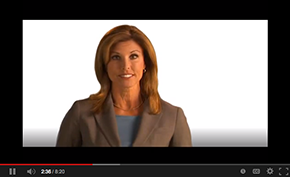By Maryellen Coggins, Chairperson, Actuarial Standards Board
Actuarial Standard of Practice (ASOP) No. 1, Introductory Actuarial Standard of Practice, tells us that “ASOPs provide the actuary with an analytical framework for exercising professional judgment.” How should actuaries understand the relationship between professional judgment and the standards of practice that they are required to satisfy under the Code of Professional Conduct?
ASOP No. 1 does not define “professional judgment,” but rather explains it by referring to what is needed to exercise it:
“Professional judgment—Actuaries bring to their assignments not only highly specialized training, but also the broader knowledge and understanding that come from experience.”
In other words, the ASOPs provide a framework within which actuarial training and experience—resulting in actuarial expertise—enables the application of professional judgment when performing actuarial services. (It is worth noting that ASOP No. 1’s description of professional judgment also connects important dots between the ASOPs and the U.S. Qualification Standards, which are grounded in basic education and experience, as well as continuing education.)
Professional judgment is not subordinate to standards of practice, but married to them to form a cohesive (and happy!) union. ASOP No. 1 clarifies that “while … ASOPs are binding, they are not the only considerations that affect an actuary’s work.” Those “other considerations” include “the actuary’s own professional judgment informed by the nature of the engagement.” In other words, ASOPs are not substitutes for professional judgment. They are predicated upon its proper exercise.
ASOPs also do not give free rein to individual judgment (no matter how expert). Instead, ASOPs discipline the exercise of judgment. ASOPs, for example, “allow for the actuary to use professional judgment when selecting methods and assumptions, conducting an analysis, and reaching a conclusion,” but within the parameters of what a particular ASOP requires an actuary to “consider, do, document, and disclose.” The effect is not so much striking a balance between prescription and know-how as achieving synergy between disciplined process and qualified expertise so that the actuary can successfully provide actuarial services in a complex world of risk and uncertainty where “actuaries can reasonably reach different conclusions when faced with the same facts.”
This analytical framework is reinforced throughout ASOP No. 1. Consider the following terms explained in ASOP No. 1 and used throughout the ASOPs. Each of these terms effectively sets a standard for the actuary and describes the role of judgment in meeting the standard:
Materiality: “An item … is material if its omission or misstatement could influence a decision of an intended user. … The actuary should evaluate materiality of the various aspects of the task using professional judgment.”
Reasonable: The ASOPs may “call for the actuary to take ‘reasonable’ steps. … The intent is to call upon the actuary to exercise the level of care and diligence that, in the actuary’s professional judgment, is necessary to complete the assignment in an appropriate manner.” Similar parallel constructions are included or the terms “practical/practicable” and “significance/significant.”
Perhaps nowhere in ASOP No. 1 is the analytical framework for the exercise of judgment better highlighted than in the sections dealing with deviation from standards of practice. Where an ASOP uses the term “must,” ASOP No. 1 says, “The ASB does not anticipate that the actuary will have any reasonable alternative but to follow a particular course of action.” The word “should,” by contrast “indicates what is normally the appropriate practice for an actuary to follow when rendering actuarial services.”
Even where these terms are used in standards of practice, ASOP No. 1 recognizes that “situations may arise where the actuary applies professional judgment and concludes that complying with [a particular] practice would be inappropriate, given the nature of the assignment and the principal’s needs.” In such instances, ASOP No. 1 directs the actuary to comply with the disclosure requirements of ASOP No. 41, Actuarial Communications, which states that “[i]f, in the actuary’s professional judgment, the actuary has deviated materially from the guidance set forth in an applicable ASOP … the actuary can still comply with that ASOP by providing an appropriate statement in the actuarial communication with respect to the nature, rationale, and effect of such deviation.” The ASOPs trust the judgment of qualified actuaries even as they require reasoned explanations for deviations from the standards.
And doing so in the context of principle-based standards that define appropriate actuarial practice is appropriate. As former ASB Chairperson Bob Meilander wrote in 2013, “The ASB strives to assure that the ASOPs address those situations that require professional judgment, as that is what our profession is trained to do and should be able to do with excellence.” ASOP No. 1 provides the analytical framework that pairs professional judgment with principle-based standards that actuaries can use to achieve such excellence in the provision of actuarial services.
(Featured in the August 2016 Actuarial Update.)




